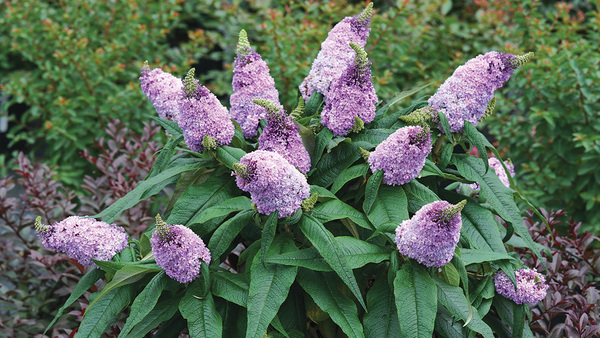
In Paul Westervelt’s article on perennial upgrades, he explains the benefit of stepping out of your comfort zone and trying new versions of tried-and-true plants:
“After whiffing a few times, consumers and pros alike may be tempted simply to stick to time-tested varieties. But some of those varieties aren’t what they once were. In other cases, they’ve been upgraded in meaningful ways that improve the gardening experience—better habit, longer bloom time, enhanced disease resistance. Before you swear off new plants forever, consider these classic upgrades.”
To help you find plants that won’t make you say, “Ugh, I should have just stuck with the original,” we asked regional experts to pick four improved versions of fan-favorite plants. All of these plants have at least one of the characteristics that Paul lists above—better habit, longer bloom time, enhanced disease resistance—and sometimes all three. Find improved plants for the Midwest below, and for even more improved classics, check out Paul’s article 8 Better Perennial Plants to Grow Over the Classic Varieties.
1. ‘Red Pygmy’ flowering dogwood

Name: Cornus florida ‘Red Pygmy’
Zones: 5–9
Size: 3 to 7 feet tall and 2 to 5 feet wide
Conditions: Partial shade; moist, well-drained, acidic soil
Native range: Eastern and central North America
In spring, ‘Red Pygmy’ is a show-stopper. It features the same long-lasting blooming power as other flowering dogwoods, but with a teeny, tight, compact habit. The branch tips are topped with distinctive rose-red flower bracts, each of which is tipped with white at the notch. In fall it rounds out the season with deep maroon foliage that turns rusty red in sunlight. This tiny tree is fantastic for small city lots and when used as a subshrub in a
perennial border, as an accent plant, or in a container.
2. Sugar Shack® buttonbush

Name: Cephalanthus occidentalis ‘SMCOSS’
Zones: 4–10
Size: 3 to 4 feet tall and wide
Conditions: Full sun; moist to wet soil
Native range: Eastern North America
Buttonbush has always been a favorite shrub of mine, especially when pruned into a small tree form. If you don’t have space for a small tree, Sugar Shack® has the same great features in a tiny package. This dwarf shrub is an excellent choice for a single specimen or hedge. In early to midsummer it is covered in cute, Sputnik-like white blooms that attract pollinators. Red, spherical, compound fruits (pictured) extend the season of interest. Be sure to keep it well watered, as it does not tolerate drought conditions.
3. Euphoria™ Ruby Joe Pye weed

Name: Eutrochium purpureum ‘FLOREUPRE1’
Zones: 4–9
Size: 2 to 3 feet tall and 2 to 21/2 feet wide
Conditions: Full sun; moist soil
Native range: Eastern and central North America
I love Joe Pye weed, but unless it is given the right conditions, its tall habit is prone to flopping at the end of the season. With its short stature, Euphoria™ Ruby solves this landscape woe. It flowers earlier than other cultivars but offers the same dusty pink blooms long into the fall season. Did I mention that it is deer resistant, pollinator friendly, and an excellent cut flower? Use it as an accent in your flower border, as a foundation planting, or in a rain garden.
4. ‘Fast Forward’ pink muhly grass

Name: Muhlenbergia capillaris ‘Fast Forward’
Zones: 6–10
Size: 2 to 3 feet tall and wide
Conditions: Full sun; dry to moderately moist soil
Native range: Eastern, central, and southern United States
In fall, pink muhly grass is a star attraction in any landscape where it grows. Guests at the Missouri Botanical Garden have sometimes even been tempted to hug its fluffy clouds of colorful blooms. If you are not a fan of the sprawling nature of the straight species, I highly recommend ‘Fast Forward’, which has an improved, upright habit. It features vibrant burgundy blooms that emerge weeks earlier than those of the straight species. After the color peaks, the inflorescences fade to a rosy pink that holds well into November.

















Comments
Log in or create an account to post a comment.
Sign up Log in